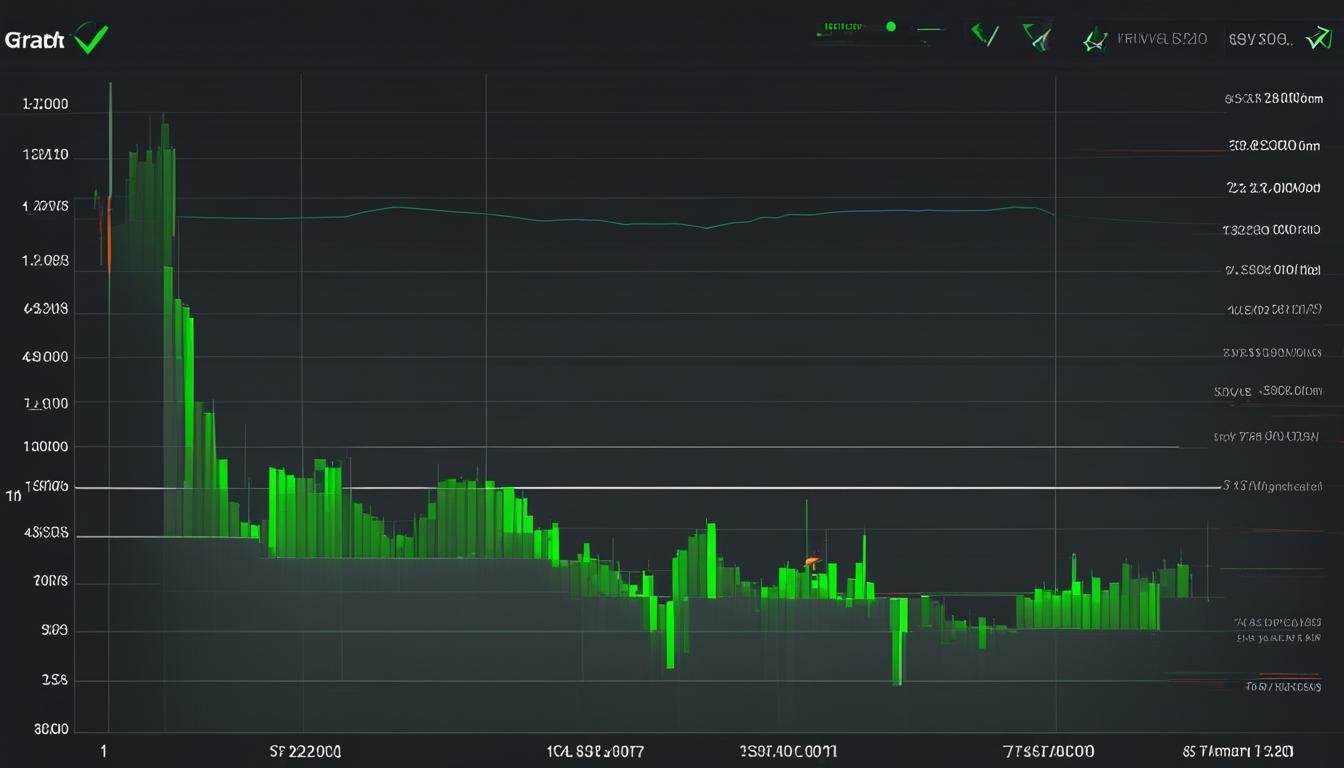What Is A Put Option?

A put option is a type of option that gives the owner the right, but not the obligation, to sell a specific stock at a predetermined price, known as the strike price. Put options are commonly used by investors in options trading as a strategic tool to protect against a decline in the stock market. Similar to stock options, put options can be bought and sold on derivatives exchanges. The value of a put option increases as the stock price falls below the strike price.
Key Takeaways:
- Put options give the owner the right to sell a specific stock at a predetermined price.
- They are used by investors to protect against a decline in the stock market.
- Put options can be bought and sold on derivatives exchanges.
- The value of a put option increases as the stock price falls below the strike price.
- Put options offer downside protection and the opportunity to profit from declining stock prices.
How Does a Put Option Work?
A put option is a financial instrument that provides the owner with the right to sell a specific stock at a predetermined price, known as the strike price, by a specified expiration date. Put options can be bought and sold on derivatives exchanges and are often used by investors as a strategic tool to protect against a decline in the stock market.
The major elements of a put option include the strike price, premium, and expiration. The strike price is the price at which the stock can be sold if the put option is exercised. The premium is the price that the buyer pays to the option seller for the right to sell the stock at the strike price. The expiration date is the date by which the put option must be exercised, or it will expire worthless.
Each put option contract represents 100 shares of the underlying stock. The value of a put option is influenced by factors such as the stock price, time to expiration, and market volatility. As the stock price falls below the strike price, the value of the put option increases. Conversely, if the stock price rises above the strike price, the value of the put option decreases.
How Does a Put Option Work?
A put option gives the owner the right to sell a stock at the strike price by a specific expiration date. The major elements of a put option are the strike price, premium, and expiration. Each put option contract represents 100 shares of the underlying stock. The value of a put option is influenced by factors such as the stock price, time to expiration, and market volatility. The premium, or price, of a put option is determined by supply and demand in the options market.
Put Option Example:
A investor purchases a put option contract for a stock with a strike price of $50 and a premium of $2. The put option has a specific expiration date of one month. If the stock price falls below $50 before the expiration date, the investor can exercise the put option and sell the stock at the higher strike price of $50, even if the stock is trading at a lower price in the market. If the stock price remains above $50, the put option will expire worthless, and the investor will lose the premium paid for the option.
| Element | Description |
|---|---|
| Strike Price | The predetermined price at which the stock can be sold if the put option is exercised. |
| Premium | The price paid by the buyer to the option seller for the right to sell the stock at the strike price. |
| Expiration | The date by which the put option must be exercised, or it will expire worthless. |
Overall, a put option provides investors with the flexibility to profit from a declining stock price and can be used as a hedging tool to protect against market downturns. Understanding the mechanics of a put option and the factors that influence its value is essential for investors looking to incorporate options trading into their investment strategies.

Buying Put Options
Investors use put options as a strategic investment to capitalize on a potential decline in stock prices. By purchasing a put option, investors gain the right to sell a specific stock at a predetermined price, even if the stock price falls below that level. This can be seen as a form of insurance against a potential decrease in the stock’s value.
One common strategy for buying put options is to use them as a hedge against existing stock positions. For example, if an investor owns shares of a particular stock and believes that the stock’s price may decline in the future, they can buy put options to protect against potential losses. If the stock price does indeed fall, the put options will increase in value and provide a profit to offset the decline in the underlying stock.
Let’s take an example to better understand buying put options. Suppose an investor believes that the stock price of XYZ Company, currently trading at $50, will drop in the next month. The investor can buy a put option contract for XYZ with a strike price of $45 and an expiration date of one month. If the stock price does fall below $45 before the expiration date, the investor can exercise the put option and sell the stock at the higher strike price, regardless of the actual market price. This allows the investor to profit from the decline in the stock’s value.

Key points to remember when buying put options:
- Buying put options allows investors to profit from a decline in stock prices.
- Put options can be used as a hedging strategy to protect existing stock positions.
- Investors pay a premium to the option seller when buying put options.
- Put options provide the right to sell the underlying stock at a predetermined price.
- It is important to carefully evaluate the potential risks and rewards before buying put options.
Buying put options can be a valuable tool in an investor’s arsenal, allowing for potential profits in a declining market and providing protection against downside risk. However, it is crucial for investors to understand the mechanics and risks associated with put options before incorporating them into their investment strategies.
Selling Put Options
As discussed earlier, put options give owners the right to sell a specific stock at a predetermined price, known as the strike price. However, investors can also choose to sell put options, which involves writing and selling put contracts. By selling a put option, the investor agrees to buy the stock at the strike price if the option is exercised.
One of the advantages of selling put options is the ability to generate income through the premium received from the buyer. The seller keeps this premium if the option expires worthless, meaning the stock price remains above the strike price. This income generation potential can make selling put options an attractive strategy for investors.
However, it’s important to note that selling put options carries its own risks. If the stock price falls below the strike price, the seller may be obligated to buy the stock at a higher price, resulting in potential losses. It’s crucial for sellers to carefully evaluate the underlying stock’s performance and market conditions before engaging in selling put options.
Put Option Payoff:
| Stock Price | Option Payoff |
|---|---|
| Above Strike Price | Option Expires Worthless |
| Below Strike Price | Buy Stock at Strike Price – Premium Received |
The table above shows the potential payoff for a put option seller based on the stock price’s relationship to the strike price. If the stock price remains above the strike price, the option expires worthless, and the seller keeps the premium received. However, if the stock price falls below the strike price, the seller may be obligated to buy the stock at the strike price, reducing the profitability of the option selling strategy.
Overall, selling put options can be a way for investors to generate income or potentially enter into a stock position at a lower cost basis. However, it’s important to carefully consider the risks and potential outcomes before engaging in this options trading strategy.
Put Options vs. Call Options
When it comes to options trading, two common types of options are put options and call options. Understanding the differences between these two options can help investors make informed decisions and develop effective strategies. Here, we’ll explore the key differences and factors that influence put options and call options.
Put Option vs. Call Option
A put option is a type of option that gives the holder the right, but not the obligation, to sell a specific stock at a predetermined price, known as the strike price. This option is typically used when investors anticipate a decline in stock prices. On the other hand, a call option is an option that gives the holder the right, but not the obligation, to buy a specific stock at a predetermined price, also known as the strike price. Call options are commonly used when investors expect an increase in stock prices.
The price movements of put options and call options are influenced by different factors. Put options tend to increase in value as the stock price decreases below the strike price. In contrast, call options increase in value as the stock price rises above the strike price. It’s important for investors to consider the delta of a put option, which measures how much the option’s value will change in relation to a change in the stock price.
Factors Affecting Put Option Price Movements
Several factors contribute to the price movements of put options. Market volatility, time to expiration, and the difference between the stock price and strike price can all influence the value of put options. Higher levels of market volatility generally lead to increased put option prices. Additionally, as the expiration date approaches, the time value of the option decreases. If the stock price is significantly below the strike price, the put option may have greater intrinsic value.
| Factors | Effect on Put Option Prices |
|---|---|
| Market Volatility | Higher volatility leads to increased put option prices |
| Time to Expiration | As expiration approaches, time value decreases |
| Stock Price vs. Strike Price | If stock price is significantly below strike price, put option may have greater intrinsic value |
Understanding the dynamics of put options and their comparison to call options is crucial for options traders. By considering market conditions, stock price movements, and other relevant factors, investors can make educated decisions when trading put options.
Advantages of Put Options
Put options offer several advantages to investors in the stock market. Understanding these advantages can help investors make informed decisions when incorporating put options into their investment strategies.
“Put options provide a level of downside protection in a declining market. This means that investors can sell stocks at a predetermined price, known as the strike price, regardless of how far the stock price falls. This can help limit potential losses and manage risk.”
One of the key advantages of put options is their ability to act as a hedging tool. Investors can use put options to offset potential losses in existing stock positions. By purchasing put options, they have the right to sell the stock at the strike price, even if the stock price falls below that level. This can be seen as a form of insurance against a potential decrease in the stock’s value.
Additionally, put options can be used to generate income through various options trading strategies. For example, investors can sell covered puts, where they sell a put option against a stock they already own. This strategy allows them to collect the premium from the option buyer and potentially benefit from the stock price remaining above the strike price.
Put Option Strategies
There are several popular put option strategies that investors can consider:
- Protective Put: This strategy involves buying put options on a stock or portfolio of stocks to protect against a decline in their value. If the stock price falls, the put option will increase in value and help offset the losses.
- Collar Strategy: This strategy involves buying protective put options and simultaneously selling call options on the same stock. The goal is to limit potential losses while generating income from the call options.
- Put Spread: This strategy involves buying and selling put options with different strike prices. The goal is to limit the potential loss while reducing the upfront cost of buying the put option.
In conclusion, put options offer flexibility and can be tailored to individual investment goals and risk tolerance. They provide downside protection, act as a hedging tool, and offer opportunities for income generation through various strategies. Investors should carefully evaluate the potential advantages and risks of using put options and consider their specific investment objectives before implementing them into their portfolio.

Conclusion
Put options are a versatile tool that investors in the stock market can utilize to their advantage. They offer the opportunity to profit from declining stock prices and provide downside protection in volatile market conditions. Whether buying or selling put options, investors should carefully consider their investment objectives, risk tolerance, and current market conditions.
By purchasing put options, investors can safeguard their stock positions against potential losses, acting as a form of insurance. For those looking to generate income, selling put options can be a lucrative strategy, allowing investors to collect premiums and potentially enter into stock positions at a lower cost basis.
It is crucial for investors to evaluate the potential benefits and risks associated with put options before engaging in options trading activities. Put options can be a part of a comprehensive investment strategy aimed at managing risk and potentially enhancing returns, but should be used in line with individual investment goals and risk tolerance. With careful consideration and proper understanding, investors can leverage the power of put options to navigate the ever-changing stock market landscape.
FAQ
What is a put option?
A put option is a type of option that gives the owner the right, but not the obligation, to sell a specific stock at a predetermined price, known as the strike price.
How does a put option work?
A put option gives the owner the right to sell a stock at the strike price by a specific expiration date. The value of a put option increases as the stock price falls below the strike price.
Why do investors buy put options?
Investors buy put options to profit from a decline in stock prices. By purchasing a put option, they have the right to sell the stock at the strike price, even if the stock price falls below that level.
What is the difference between buying and selling put options?
When buying put options, investors pay a premium to the option seller and have the right to sell the stock at the strike price. When selling put options, investors receive a premium from the buyer and may be obligated to buy the stock at the strike price if the option is exercised.
How do put options compare to call options?
Put options increase in value as the stock price decreases, while call options increase in value as the stock price rises. The delta of a put option measures how much the option’s value will change in relation to a change in the stock price.
What are the advantages of put options?
Put options provide downside protection in a declining market, can be used as a hedging tool, and offer potential income generation through options trading strategies.







